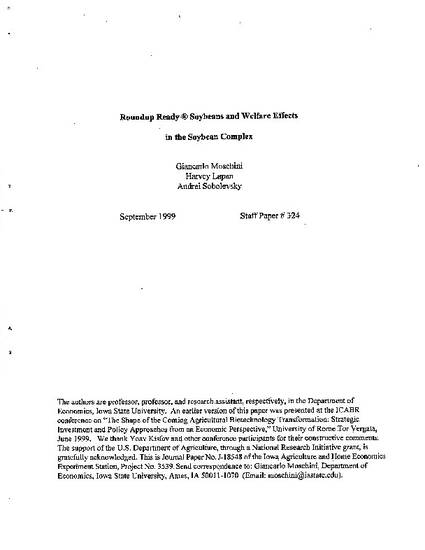
Article
Roundup Ready Soybeans and Welfare Effects in the Soybean Complex
Economic Staff Paper Series
Document Type
Report
Publication Date
9-1-1999
Number
324
Disciplines
Abstract
A stylized three-region world model for the soybean complex is developed to evaluate the welfare effects of Roundup Ready (RR) soybean adoption. The innovation is modeled in a structural way that explicitly accounts for the incentives open to farmers as well as for the pricing of RR soybean seeds by a multinational firm thatholds intellectual property rights. Themodel, calibrated on recent benchmark data, is solved for various scenarios to evaluate the production, price, and welf2U"e impacts of RR soybean adoption. The United States gains substantially from the superior innovation, with the innovator capturing the larger share of the welfare gains. US farmers benefit in the base scenario, but would be adversely affected if the RR innovation were to increase yields. Spillover of the new technology to foreign competitors erodes the competitive position of domestic soybean producers, and export of the technology per se may not improve the welfare position of the innovating country. With strong overseas intellectual property rights protection, the innovator-monopolist could extract a substantial share of the efficiency gains, thus benefiting the home country. But with weaker international intellectual property protection, profits from foreign sales of the new technology just offset the loss of domestic producer welfare. Consumers in every region gain from the adoption of RR soybeans.
Citation Information
GianCarlo Moschini, HARVEY E LAPAN and Andrei Sobolevsky. "Roundup Ready Soybeans and Welfare Effects in the Soybean Complex" (1999) Available at: http://works.bepress.com/harvey-lapan/16/
